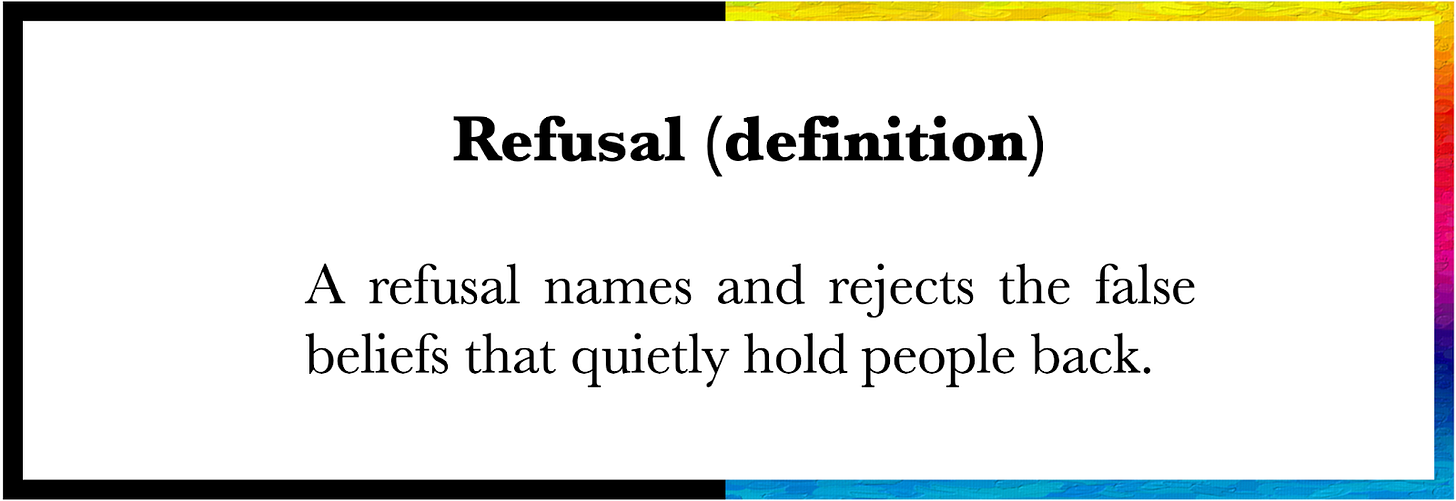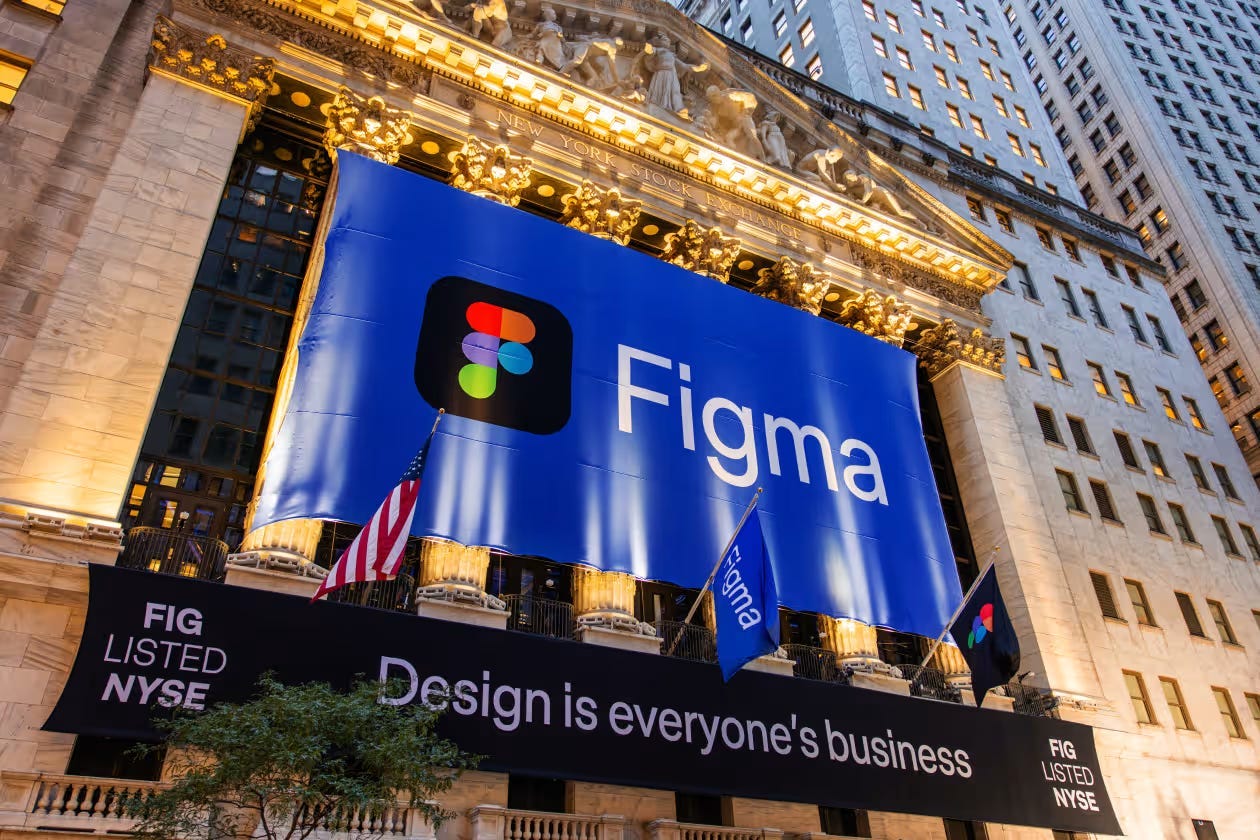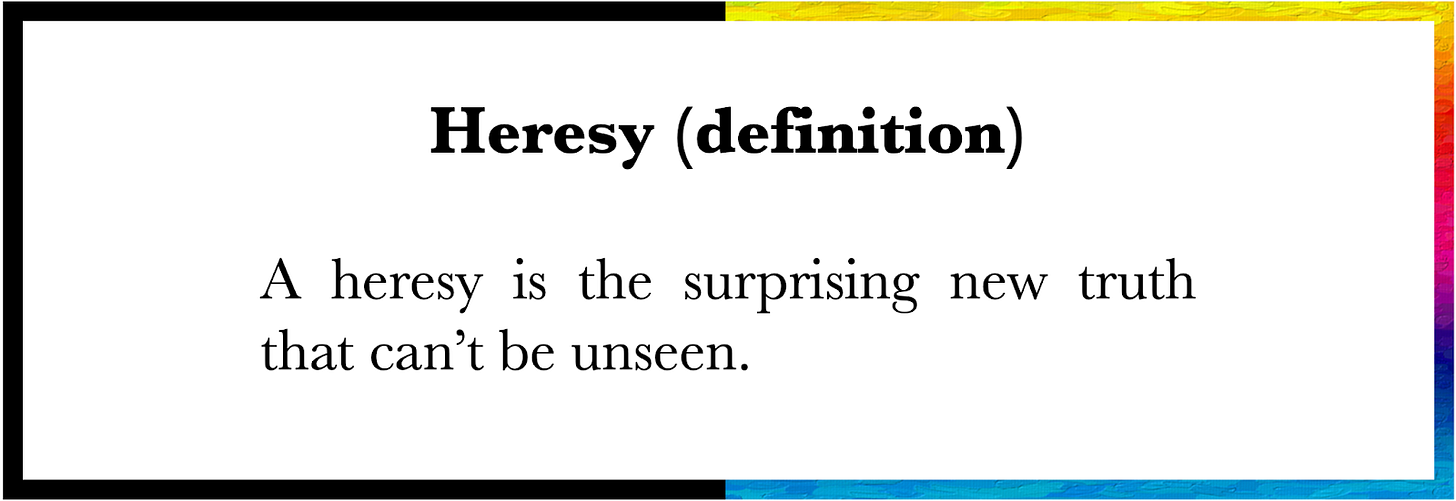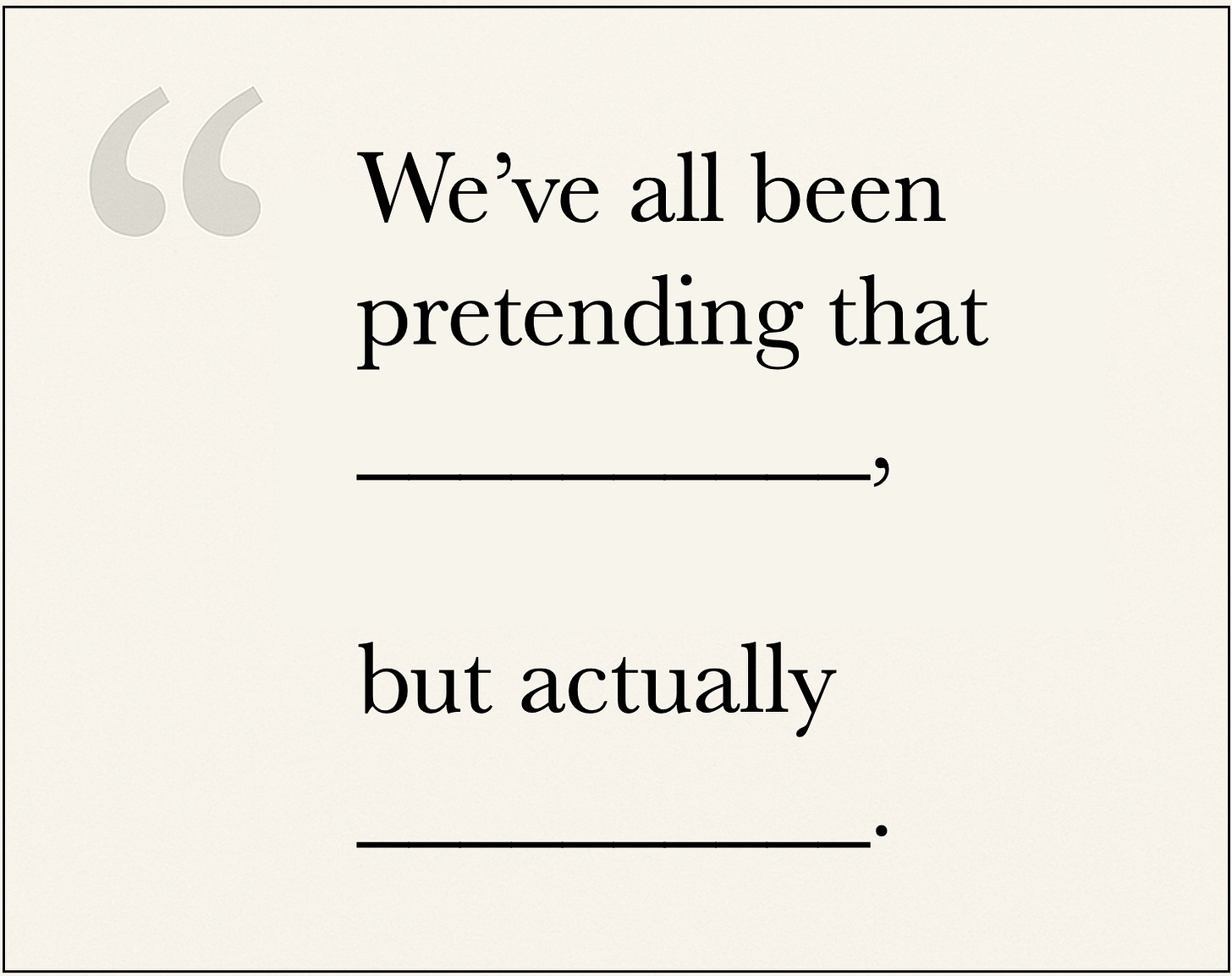Every Reframe Starts with a Refusal
The Trap You Don’t See
The most dangerous rules in business aren’t “laws” like in physics. They’re unspoken conventions, taken as truth because “that’s how it’s done.” They’re like a frame around a picture that goes mostly unnoticed.
These frames don’t announce themselves. They prefer to sit quietly in the background, whispering things such as “Contracts always take a week”, “Design lives in files”, “Payments need banks”, “Editing video is hard.”
The problem is, once you accept the frame, you inherit its limits. You’re trapped in its comparisons, boxed in by its incumbents, and bound by its so-called ‘best practices.’ The harder you fight to win comparison games inside it, the more you blur into the background. In the end, the frame shapes you more than you shape it.
Breakthroughs don’t come from competing inside the current frame. They come from refusing the frame entirely, stepping outside it, and showing the world a new way to think and act.
Why Refusal Changes Minds and Markets
The world generates way more signals than the brain can process, so the mind builds shortcuts. If I leave after 7:45, I’ll hit heavy traffic. If someone I trust vouches for that person, I’ll give her a chance. Don’t send an email when you’re angry. If you use these tricks often enough, they stop feeling like rules of thumb and start feeling like how the world works. You begin treating soft rules as if they were hard laws.
Pattern-breaking founders do something different. They name the false assumption, refuse to obey it, and offer a heretical alternative that makes the old rule look silly. When that refusal lands, the brain does something rare: It pauses. Attention snaps to the anomaly. In that moment, the frame loses its grip. The listener leans in: “This feels different. Show me.”
Figma: Refusing the File and the Handoff
For decades, design lived in files. Endless saving, uploading, merging, and emailing became the daily grind. Underneath was a deeper dogma: design was primarily a “single player” activity. Designers worked apart from developers, polishing their files, then handing them off. Collaboration wasn’t continuous — it came in bursts of uploads, comments, and version swaps, never in real time.
Dylan Field refused both assumptions. He asked: “Why should design live in static files? And why should design be a solo act that gets thrown over the wall to developers?”
The first time people saw multiple cursors live-editing the same canvas in Figma, their mental model for “how design works” reset instantly. The old belief (“Design is a file, created solo and handed off”) collapsed. The new reality was obvious:
“Design is multiplayer.”
“Design and development happen together.”
Figma’s refusal broke the frame and gave people a new mental model for how design should work. Ten years later, the world had caught up. ‘Design is Everyone’s Business’ draped the New York Stock Exchange, a public admission that Figma’s way of working had become the way.
Cursor AI: Refusing AI as an Add-on
The biggest leaps in AI haven’t come from better tools inside the frame, but from founders who refused it.
Take Cursor. When AI coding tools first appeared, they were framed as autocomplete helpers. GitHub Copilot could autocomplete lines, offer snippets, and show familiar coding patterns. But it was always a bolt-on, a plugin inside VS Code.
Cursor’s founders asked: “What if AI wasn’t just a sidekick in the editor, but the editor itself?” That shift in framing made all the difference.
Cursor wasn’t VS Code with a Copilot attached. It was VS Code reimagined around AI, with the model sitting at the center of the environment. Developers could ask it to refactor code, explain functions, add tests, or debug entire flows. Cursor broke from autocomplete entirely. It read the whole repo and worked across the project like a teammate, not a plugin.
The first time developers used Cursor, their expectations for coding were instantly reframed. It wasn’t just: “AI can help me write code.” That belief already existed. The reset was bigger:
“My IDE itself is intelligent.”
“Coding is a dialogue, not a grind.”
“AI isn’t an add-on… it’s the operating system for writing code.”
Once seen, it was impossible to go back to the old grind.
Always Ask “What am I refusing?”
These startups refused the old way, broke the frame, and left the comparison trap behind. They weren’t trying to be faster, cheaper, or better versions of what already existed. They made people see the problem in a completely new way.
That shift gave them control of the story. They spoke in their own language, set their own terms, and stood apart from everything that came before.
That’s why it’s worth asking: “What am I refusing?” when you’re testing whether your own startup idea has the potential to be a real breakthrough.
Where the Lies Hide in Plain Sight
When I look at the startups that became big breakthroughs, I notice something surprising. The best startup ideas usually don’t come from things people complain about. Complaints mean people still think something could be fixed. The real opportunities are the things no one bothers to complain about anymore, because they’ve decided that’s just how it works.
So where do you look?
1. Tedious Workarounds
When people do the same boring task over and over and no one questions it, that’s a clue.
Teams copying data between systems by hand every week.
Engineers babysitting flaky APIs.
Finance teams reconciling spreadsheets every Tuesday.
These aren’t just small annoyances. They’re a tax people have stopped noticing.
2. Rules That Aren’t Real
Some limits are real, like physics. Most aren’t. They’re just leftovers from old systems.
Banks that make money sit for two days.
Hospitals that take six months to approve new software.
Government forms that still require a fax machine.
If a rule exists only on paper, it’s probably a good place to dig.
3. Problems Everyone Gave Up On
You can tell a lot from the emotion. Complaints mean people still care. Shrugs mean they don’t.
Passengers who expect delays as normal.
Teachers drowning in paperwork.
Patients waiting weeks for approvals without asking why.
Indifference is gold. When people stop even mentioning a problem, it means they’ve accepted it — and that’s usually where the biggest opportunities hide.
From Refusal to Heresy (The New Truth)
You need to complement your refusal with a heresy that declares what's actually true. Ideally, it should be a surprising new truth that makes the old rule look absurd. It reframes reality so completely that going back becomes unthinkable.
Figma's heresy: Design is multiplayer by default. Everyone sees everyone's cursor, editing the same canvas live. The old world of emailing files back and forth instantly feels prehistoric.
Cursor's heresy: Your IDE understands your entire codebase, not just the line you're writing. It can refactor across files, explain complex logic, and debug with context. The old world of "smart autocomplete" feels like using a spell checker when you could have a personal writing coach.
Here is a quick sanity check: "We've all been pretending that [old rule], but actually [new truth]."
We've all been pretending that design requires sending files back and forth, but actually design is a live multiplayer canvas.
We've all been pretending that AI provides autocomplete for code, but actually the entire IDE should be intelligent.
It’s good to stress test your idea both ways: What fake rule are you rejecting? What better truth are you offering? You need both answers to have an insight that leads to a real breakthrough.
Soon, we'll dig deeper into heresy and how breakthrough founders powerfully align it with their refusal.
When It’s New Longer Weird
If you’re successful, the old belief won’t just fade… it will begin to sound absurd.
“Remember when we faxed forms to take a payment?”
“Remember passing design files back and forth over email?”
“Remember when people said AI could never compose music?”
Now those lines get the same reaction as, “Remember driving to Blockbuster to rent a movie?”
That’s the real victory lap. It’s the quiet moment when your idea has so completely replaced the old frame that people struggle to imagine it was ever different.
Because the old rule was never a law of nature. It was just a habit dressed up as one.
Refuse to Settle for Better
We’re entering an era of default hypercompetition. AI is making everyone faster, markets move in days, and “best practices” spread in hours. In that world, better will be instantly copied. Cheaper will be matched. Faster will be outpaced.
Only a clear break from legacy logic creates the distance to escape the comparison trap. It’s the first act of being the only, rather than trying to be the best.
Every founder will face the same choice: play the game better, or refuse the game entirely. Refusal breaks the frame, but it’s only the beginning. To create a new reality, you also need the heresy, which is the new truth that moves people forward. That’s where we’ll go next.








Just yesterday I had exactly this conversation with my UX designer. He was trying to improve on the old (horrible boilerplate) design and I had to keep reiterating that we had to focus on what the reason with user was on our website. In the end it turned out we just needed a single form field (like the Google homepage). That was a nice ‘breaking the frame’ moment.
I think our pieces are very complimentary - u agree? LMK and don’t hesitate if there is something of interest to follow up on or where I can help. Keith, the Startup Whisperer @ https://keithnewman.substack.com/?utm_campaign=profile_chips